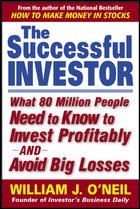Key theme for 2007, buy utility stocks (period.)
The key theme for 2007 is to overweight utility counters. I do believe that it is a matter of time before we see a re-rating of the sector. Currently, the sector trades at an average Price Earnings Ratio (PER) of 10x to 12/07 earnings and 1.3x Price to Book (PBV). Moving forward, my “gut feel” is that the sector will trade closer to 15x PER. This represents a 50% upside from where we are right now. Here’s the summary of how the utility stocks are currently trading and how it will trade assuming the re-rating does occur.
PER(x) P/BV(x) @15x
MERALCO B 7.1 1.0 P116.0
First Holdings 10.0 1.0 P94.5
First Gen 10.6 1.4 P82.5
Manila Water 9.7 1.4 P15.0
EDC 9.2 1.5 P7.8
In 2006, we saw the same phenomenon in the banking sector. Overall, the average valuation of banking stocks rose from 1.2x Price to Book Value (P/BV) to 1.8x P/BV. The re-rating was driven primarily by the improving asset quality of the banks. Thanks to the full impact of the SPAV law. It virtually eliminated all the systemic risk in the sector as banks get to clean up its balance sheet.
So for the utility sector, the key drivers are:
1.) “Pro-business” framework. The recent decision by the Supreme Court allowing MERALCO to keep the P0.0875 per kwh rate increase granted in 2003 shows that the government is willing to let utility companies make a reasonable economic return from their investment. This is also manifested in the recent rate hike granted to Manila Water and Maynilad.
2.) Big-ticket privatization. There are several deals that are coming up in the next few months. The Transco bidding and the NAPOCOR privatization will surely spice up the sector. The successful IPO of PNOC-EDC (EDC-P4.80) is a sign of things to come. Most likely, valuation will continue to improve based on the success of EDC.
3.) Tons of free cash. Fundamentally, most utility stocks are generating a lot of free cash. This allows them to pay dividend or buy-back their shares. MERALCO (MERB – P55.0) declared a P1.0 cash dividend for the first time in 5 years. Valuation wise, you would want to pay a premium on these companies.
Just like the banking sector, these drivers have virtually wiped out the systemic risk in the sector. So fast forward to 2007, there is every reason for utility stocks to take the spotlight.
PER(x) P/BV(x) @15x
MERALCO B 7.1 1.0 P116.0
First Holdings 10.0 1.0 P94.5
First Gen 10.6 1.4 P82.5
Manila Water 9.7 1.4 P15.0
EDC 9.2 1.5 P7.8
In 2006, we saw the same phenomenon in the banking sector. Overall, the average valuation of banking stocks rose from 1.2x Price to Book Value (P/BV) to 1.8x P/BV. The re-rating was driven primarily by the improving asset quality of the banks. Thanks to the full impact of the SPAV law. It virtually eliminated all the systemic risk in the sector as banks get to clean up its balance sheet.
So for the utility sector, the key drivers are:
1.) “Pro-business” framework. The recent decision by the Supreme Court allowing MERALCO to keep the P0.0875 per kwh rate increase granted in 2003 shows that the government is willing to let utility companies make a reasonable economic return from their investment. This is also manifested in the recent rate hike granted to Manila Water and Maynilad.
2.) Big-ticket privatization. There are several deals that are coming up in the next few months. The Transco bidding and the NAPOCOR privatization will surely spice up the sector. The successful IPO of PNOC-EDC (EDC-P4.80) is a sign of things to come. Most likely, valuation will continue to improve based on the success of EDC.
3.) Tons of free cash. Fundamentally, most utility stocks are generating a lot of free cash. This allows them to pay dividend or buy-back their shares. MERALCO (MERB – P55.0) declared a P1.0 cash dividend for the first time in 5 years. Valuation wise, you would want to pay a premium on these companies.
Just like the banking sector, these drivers have virtually wiped out the systemic risk in the sector. So fast forward to 2007, there is every reason for utility stocks to take the spotlight.

